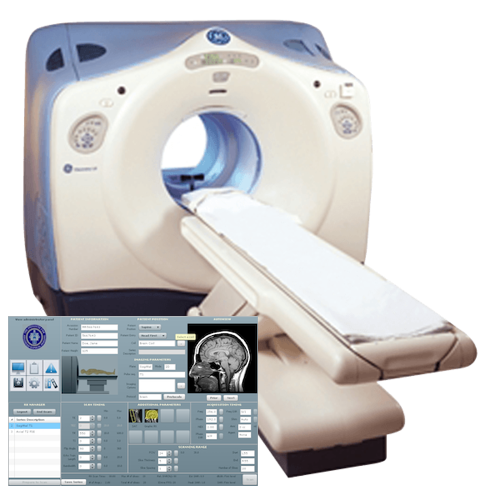|
Magnesium has an effect on more than 300 bodily chemical reactions. This includes maintaining heart health, sustaining blood vessels, boosting and maintaining energy levels, producing new cells and proteins, and enabling enzyme activity.
MSM (MethylSulfonylMethane) is an abbreviation of methylsulfonylmethane, an organic form of sulfur. The chemical formula of MSM is CH3SO2CH3. It is the form in which sulfur is biologically active and appears in nature in all living organisms.
$39.95
|
|
Histopathology Tests
Histopathology Reports
What is a pathology report? A pathology report is a document that contains the diagnosis determined by examining cells and tissues under a microscope. The report may also contain information about the size, shape, and appearance of a specimen as it looks to the naked eye. This information is known as the gross description. A pathologist is a doctor who does this examination and writes the pathology report. Pathology reports play an important role in cancer diagnosis and staging (describing the extent of cancer within the body, especially whether it has spread), which helps determine treatment options. How is tissue obtained for examination by the pathologist? In most cases, a doctor needs to do a biopsy or surgery to remove cells or tissues for examination under a microscope. Some common ways a biopsy can be done are as follows:
Tissue removed during a biopsy is sent to a pathology laboratory, where it is sliced into thin sections for viewing under a microscope. This is known as histologic (tissue) examination and is usually the best way to tell if cancer is present. The pathologist may also examine cytologic (cell) material. Cytologic material is present in urine, cerebrospinal fluid (the fluid around the brain and spinal cord), sputum (mucus from the lungs), peritoneal (abdominal cavity) fluid, pleural (chest cavity) fluid, cervical/vaginal smears, and in fluid removed during a biopsy. How is tissue processed after a biopsy or surgery? What is a frozen section? The tissue removed during a biopsy or surgery must be cut into thin sections, placed on slides, and stained with dyes before it can be examined under a microscope. Two methods are used to make the tissue firm enough to cut into thin sections: frozen sections and paraffin-embedded (permanent) sections. All tissue samples are prepared as permanent sections, but sometimes frozen sections are also prepared. Permanent sections are prepared by placing the tissue in fixative (usually formalin) to preserve the tissue, processing it through additional solutions, and then placing it in paraffin wax. After the wax has hardened, the tissue is cut into very thin slices, which are placed on slides and stained. The process normally takes several days. A permanent section provides the best quality for examination by the pathologist and produces more accurate results than a frozen section (1). Frozen sections are prepared by freezing and slicing the tissue sample. They can be done in about 15 to 20 minutes while the patient is in the operating room (1). Frozen sections are done when an immediate answer is needed; for example, to determine whether the tissue is cancerous so as to guide the surgeon during the course of an operation. How long after the tissue sample is taken will the pathology report be ready? The pathologist sends a pathology report to the doctor within 10 days after the biopsy or surgery is performed. Pathology reports are written in technical medical language. Patients may want to ask their doctors to give them a copy of the pathology report and to explain the report to them. Patients also may wish to keep a copy of their pathology report in their own records (1). What information does a pathology report usually include? The pathology report may include the following information (1):
What might the pathology report say about the physical and chemical characteristics of the tissue? After identifying the tissue as cancerous, the pathologist may perform additional tests to get more information about the tumor that cannot be determined by looking at the tissue with routine stains, such as hematoxylin and eosin (also known as H&E), under a microscope (2). The pathology report will include the results of these tests. For example, the pathology report may include information obtained from immunochemical stains (IHC). IHC uses antibodies to identify specific antigens on the surface of cancer cells. IHC can often be used to:
The pathology report may also include the results of flow cytometry. Flow cytometry is a method of measuring properties of cells in a sample, including the number of cells, percentage of live cells, cell size and shape, and presence of tumor markers on the cell surface. Tumor markers are substances produced by tumor cells or by other cells in the body in response to cancer or certain noncancerous conditions.) Flow cytometry can be used in the diagnosis, classification, and management of cancers such as acute leukemia, chronic lymphoproliferative disorders, and non-Hodgkin lymphoma (2). Finally, the pathology report may include the results of molecular diagnostic and cytogenetic studies. Such studies investigate the presence or absence of malignant cells, and genetic or molecular abnormalities in specimens. What information about the genetics of the cells might be included in the pathology report? Cytogenetics uses tissue culture and specialized techniques to provide genetic information about cells, particularly genetic alterations. Some genetic alterations are markers or indicators of a specific cancer. For example, the Philadelphia chromosome is associated with chronic myelogenous leukemia (CML). Some alterations can provide information about prognosis, which helps the doctor make treatment recommendations (3). Some tests that might be performed on a tissue sample include:
Can individuals get a second opinion about their pathology results? Although most cancers can be easily diagnosed, sometimes patients or their doctors may want to get a second opinion about the pathology results (1). Patients interested in getting a second opinion should talk with their doctor. They will need to obtain the slides and/or paraffin block from the pathologist who examined the sample or from the hospital where the biopsy or surgery was done. Many institutions provide second opinions on pathology specimens. Selected References
|
|
|

OPEN 24 HOURS: ACCIDENT EMERGENCY, LAB SERVICES, IMAGING SERVICES & PHARMACY










